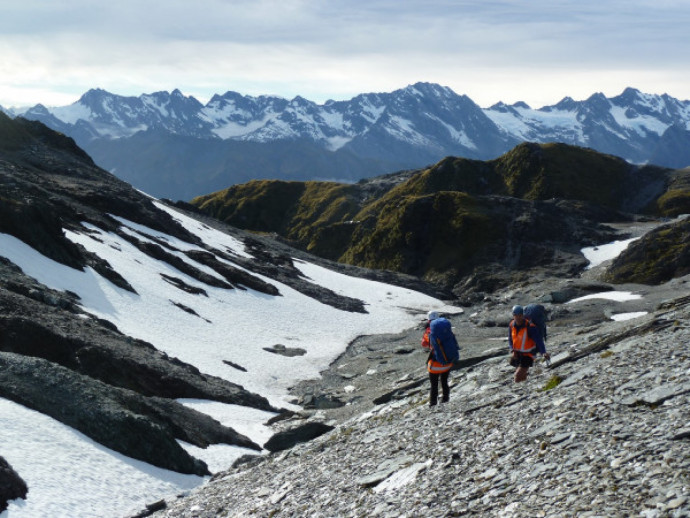Research
Published 14 January 2021Fire and ice

Will future Australian blazes turn NZ snow as red as our skies?
Original article by Jamie Morton published on 7 January 2021 in the New Zealand Herald, p. 10
When smoke from Australia's unprecedented bush fires turned Auckland skies a ghastly orange this time last year, it's unlikely many of us considered the impact it had at the other end of the country.
That was the added melting of our glaciers coming after what had already been a horror few years for the tourist-drawing wonders.
Now, a team of scientists have set out to learn how future bush fires across the Tasman expected to become more frequent under climate change will worsen their decline.
"It's clear that the glaciers and snowfields of New Zealand took a large hit when so much material from the bush fires in Australia was deposited here," Manaaki Whenua Landcare researcher Dr Phil Novis said. "But no one knows exactly how large." A new $1 million project, supported by the Marsden Fund, is focused on what's called albedo a measure of the amount of solar radiation reflected back from the Earth's surface.
Because the albedo of pure snow was high, a large amount of the incoming radiation was reflected back before it could be absorbed and cause melting. But it took surprisingly little to lessen this protective effect.
Black carbon created by incomplete burning of vast amounts of woody biomass, during bush fires is one of the most effective substances at lowering albedo.
Earlier research has found it can have a dramatic impact on glaciers and snowfields even when black carbon in fresh snow can't be made out by the naked eye.
In New Zealand and elsewhere, scientists suspect the the threat could be compounded by naturallyoccurring particles found in snow notably snow algae.
Sometimes known as "watermelon snow", it can colour vast areas of snow red, pink or orange.
"In New Zealand they can visibly colour the glaciers on Ruapehu when viewed from the Desert Rd in summer," said Novis, who is co-leading the study with Victoria University's Dr Lynda Petherick.
"These communities also reduce the albedo of snow and they experience positive feedback. They need liquid water in the snow to grow, and their growth promotes liquid water by increasing albedo and melting, and so the cycle continues.
"It has been said 'the last snow on Earth will be red', referring to this effect." What isn't known, is exactly how snow algae interacts with black carbon.
"Bush fire ash, for instance, is a fertiliser. On the other hand, adding it to an ecosystem can raise the pH, something to which snow algae are known to be sensitive. Do aerosols in snow from the bush fires promote algal growth, or hinder it? The answer could have large implications for the effect of these punctuated events on our glacial systems." While there has been broad research to date, Novis said the precise interplay with ash contamination and snow biology had received little attention from scientists.
"I think it's also fair to say that the kind of snow discolouration experienced here last summer was almost unprecedented," he said.
"We initially estimated 80 tonnes of ash had been deposited on the Fox Glacier neve for instance and there is a lot of value in making a more accurate assessment of these quantities and their effects." The project would draw on samples Novis and colleagues Dr John Hunt and Dr Heather Purdie collected from glaciers in the wake of last summer's fires.
"In our laboratory, I also have 20 or so strains of snow algae growing in a fridge with lights that have been accumulated during previous seasons. With these at our disposal we can test the effect of bush fire material on algae in some detail, using controlled growth experiments with carefully designed treatments." The study also involves field experiments including work at the well-studied, slowly-receding Tasman Glacier to refine existing glacier models.
RESEARCHER
Dr Philip Novis and Dr Lynda Petherick
ORGANISATION
Manaaki Whenua Landcare and Victoria University of Wellington
FUNDING SUPPORT
Marsden Fund
CONTRACT OR PROJECT ID
LCR2003: 'Will future Australian blazes turn NZ snow as red as our skies?'
